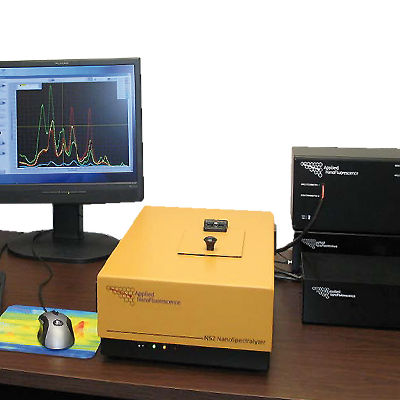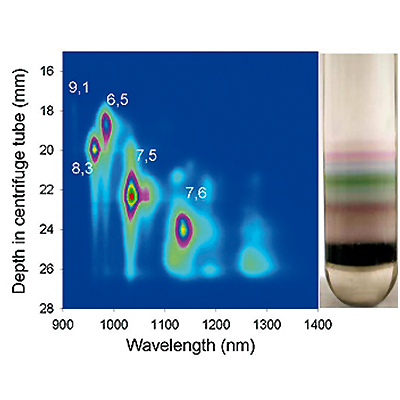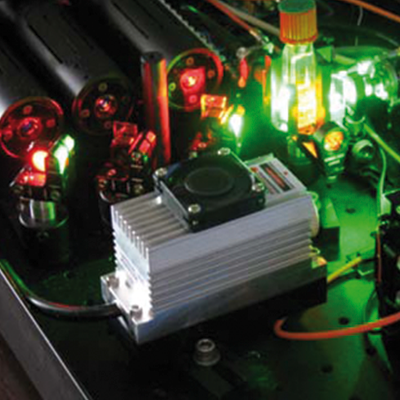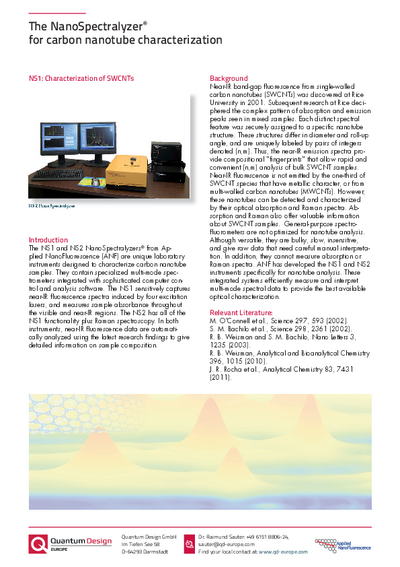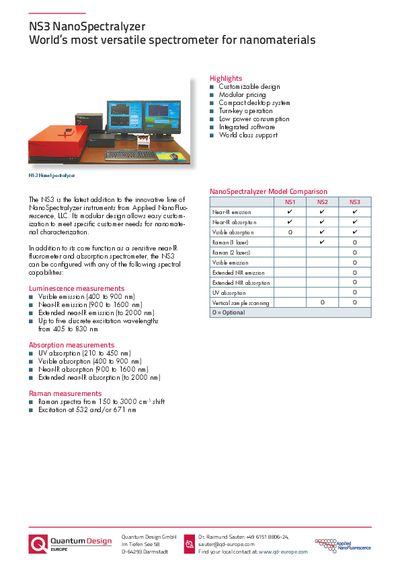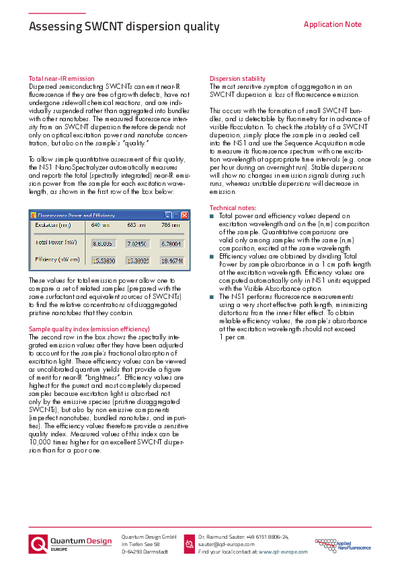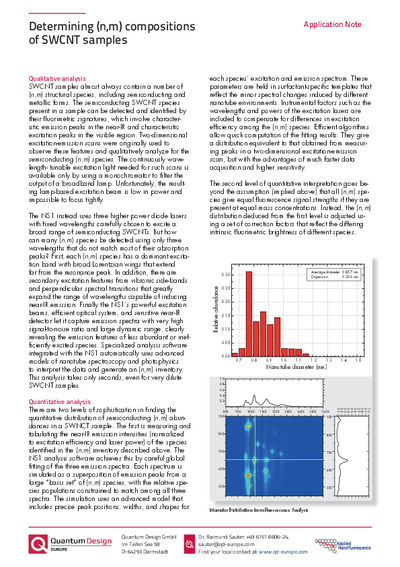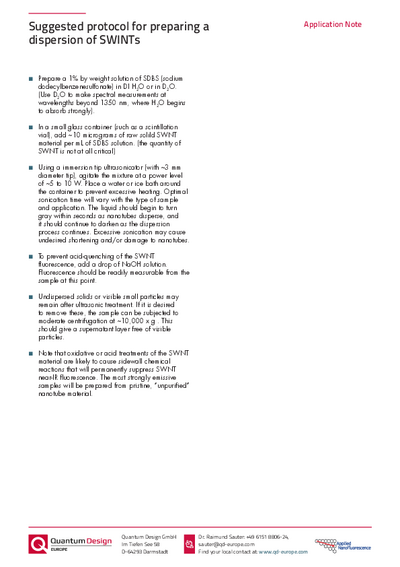Caractérisation des nanotubes de carbone
NanoSpectralyzer de Applied NanoFluorescenceLes spectres d'émission dans le proche infrarouge d'échantillons de nanotubes servent d'"empreintes digitales" de composition. La spectrofluorimétrie peut donc être utilisée pour déduire des informations détaillées sur les compositions des échantillons en vrac, qui contiennent invariablement des mélanges d'espèces (n,m).
Applied Nanofluorescence (ANF) a mis au point un instrument fluorimétrique spécialisé conçu spécifiquement pour l'analyse des nanotubes de carbone à paroi unique (SWCNT). Cet analyseur unique combine un système optique compact et efficace et un logiciel sophistiqué qui acquiert et interprète les données. Il permet aux utilisateurs d’identifier facilement et rapidement les quantités de nanotubes semi-conducteurs (n,m) spécifiques dans les échantillons.
- Caractérisation des SWCNT et MWCNT
- Détection par fluorescence des SWCNT
- Absorption optique et spectroscopie Raman des SWCNT et MWCNT
Plus d'informations
Near-IR fluorescence is not emitted by the one-third of SWCNT species that have metallic character, or from multi-walled carbon nanotubes (MWCNTs). However, these nanotubes can be detected and characterized by their optical absorption and Raman spectra. Absorption and Raman also offer valuable information about SWCNT samples. General-purpose spectrofluorometers are not optimized for nanotube analysis. Although versatile, they are bulky, slow, insensitive, and give raw data that need careful manual interpretation. In addition, they cannot measure absorption or Raman spectra. ANF has developed the NS1 and NS2 instruments specifically for nanotube analysis. These integrated systems efficiently measure and interpret multi-mode spectral data to provide the best available optical characterization.
Near-infrared band-gap fluorescence from individual semiconducting SWCNT was discovered at Rice University in 2001. Subsequent research at Rice deciphered the complex pattern of absorption and emission peaks seen in mixed samples. As a result, each distinct spectroscopic feature has now been assigned to a specific nanotube structure. These structural species differ in diameter and chiral angle, and are uniquely labeled by pairs of integers denoted (n,m).
Applications
Téléchargements
Contact
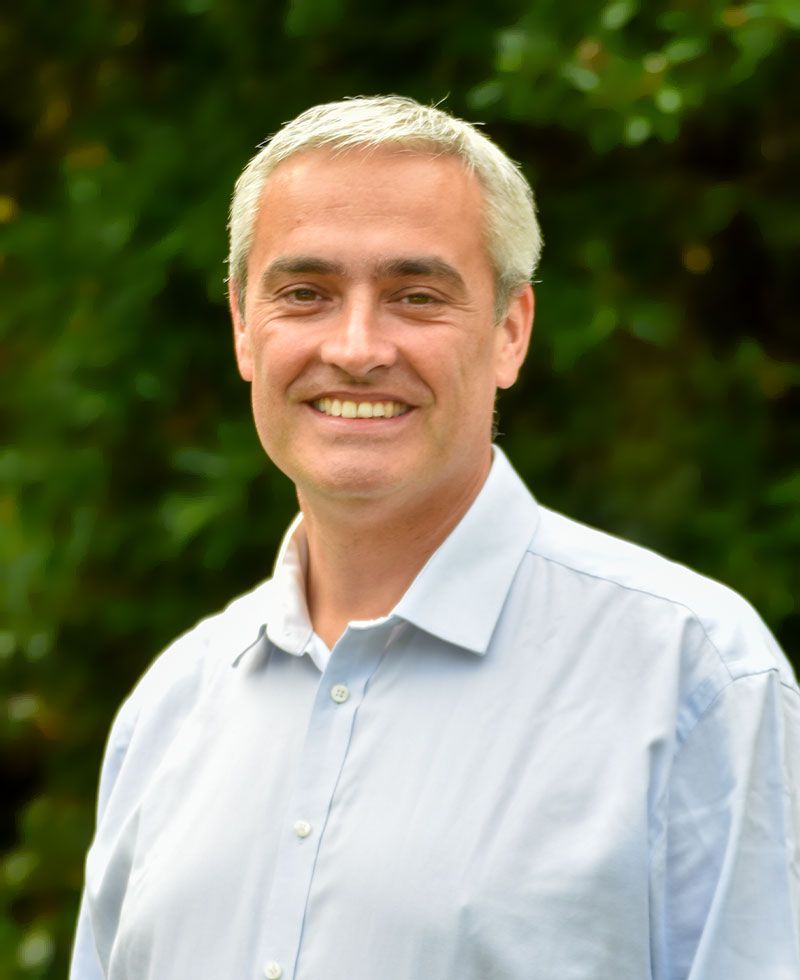
Navigation
Catégories
Contact
Quantum Design S.A.R.L.
1 avenue de l’Atlantique
Bâtiment Mac Kinley
91940 Les Ulis
France
| Tél. : | 01 69 19 49 49 |
| Email : | franceqd-europe.com |

